Table of Contents
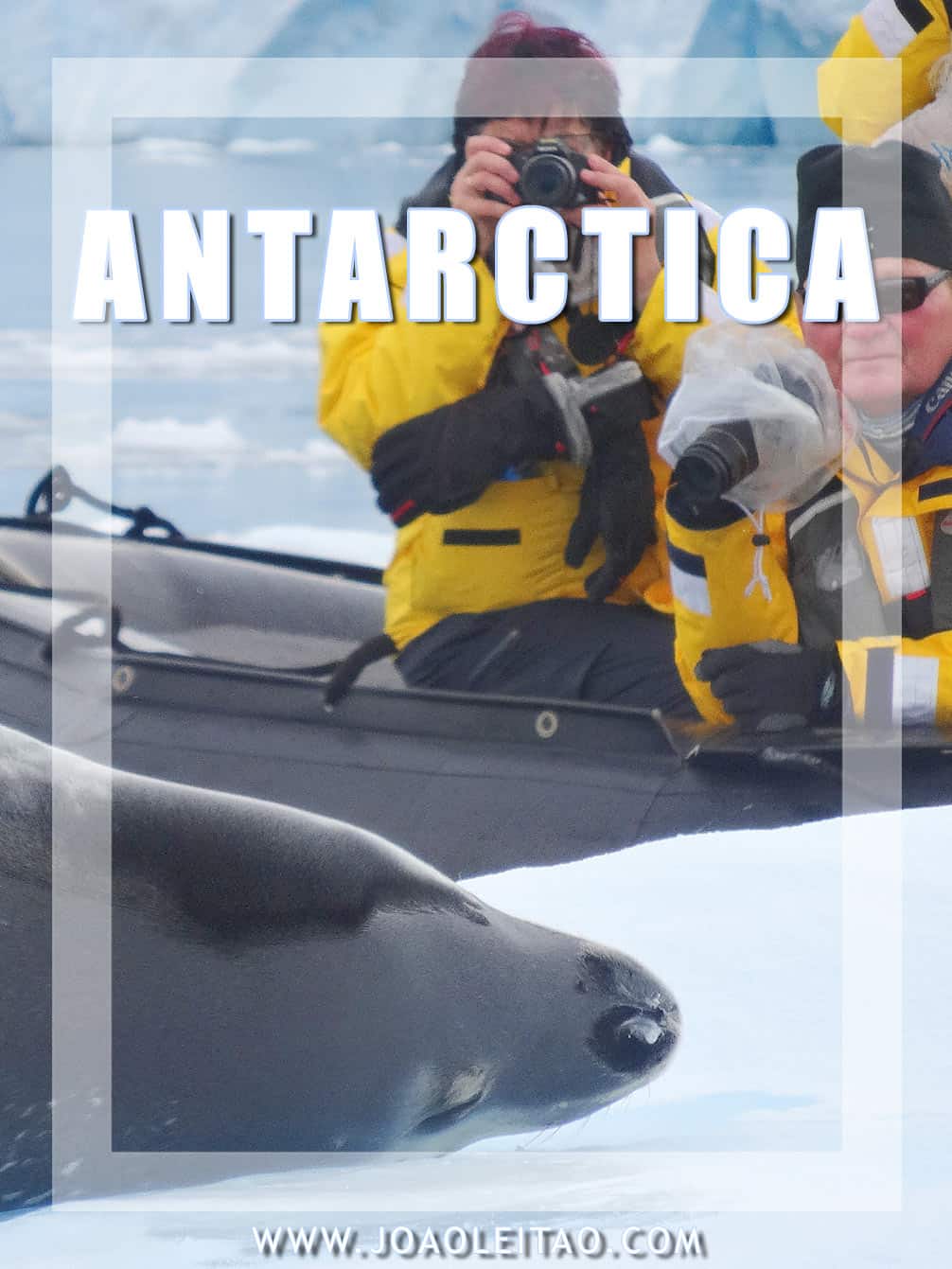
Visiting Antarctica is an unique experience. Not many people have traveled to this remote land and few of them who did have returned. It’s indeed a once-in-a-lifetime trip, achievable only by the most fortunate.
If you’re part of the small number of people who have the chance to visit the frozen continent in your lifetime, you’ll have to choose between traveling on a cruise ship to Antarctica like everyone else.
On these trips to Antarctica, you can go on daily expeditions to take a closer look at wildlife, or going further to embrace other activities, making the most of this unique experience. Welcome to my ultimate list of things to do in Antarctica.
Things to do in Antarctica
1. Common Experiences
I hesitate to use the word “common” to describe anything about Antarctica, but I’d like to list those experiences that, despite being undoubtedly memorable, will be a part of any trip to the frozen continent, including whale watching or seeing icebergs.
Icebergs
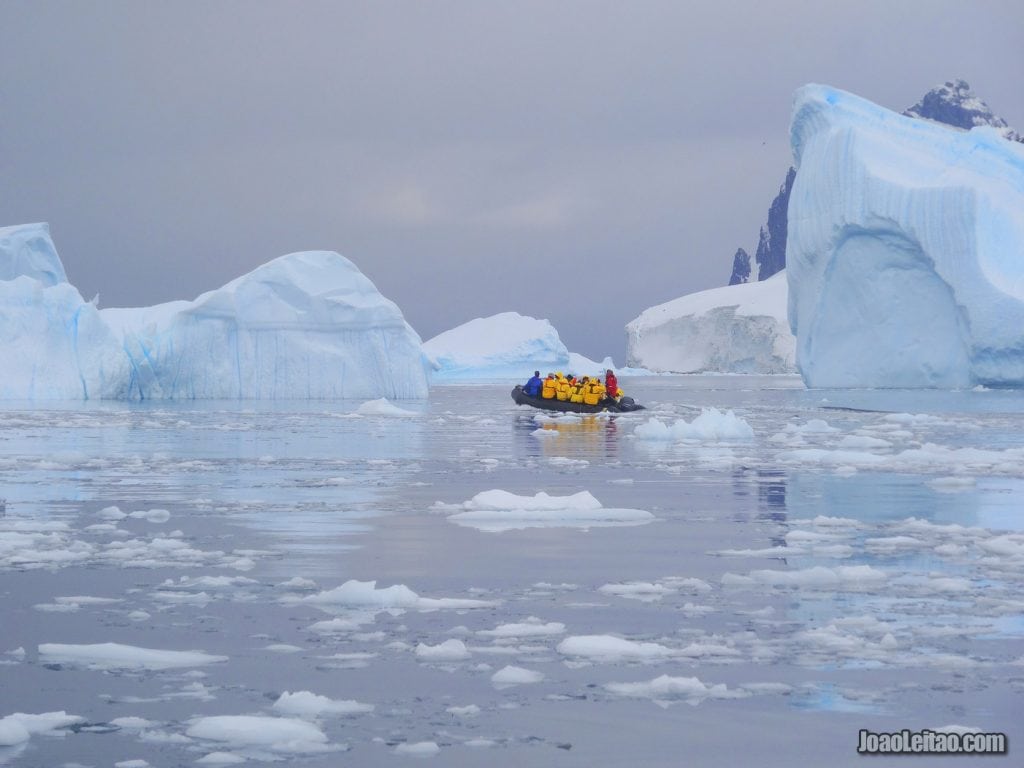
No doubt seeing a massive iceberg slide through the Antarctica waters just a few meters from you is an unforgettable experience. You don’t realize the beauty of that vast mass of ice until you’re there, seeing the different shades of blue, the details that time has carved on that massive block of frozen water.
It’s an even more powerful experience if the iceberg recently turned upside down, because the side that’s usually underwater is even more spectacular, with a unique blue that resembles the hues of a precious stone.
Please note that the best time to see icebergs is at the beginning of the Antarctic summer, in November, which also happens to be the cheapest time of year to travel to Antarctica.
Glaciers
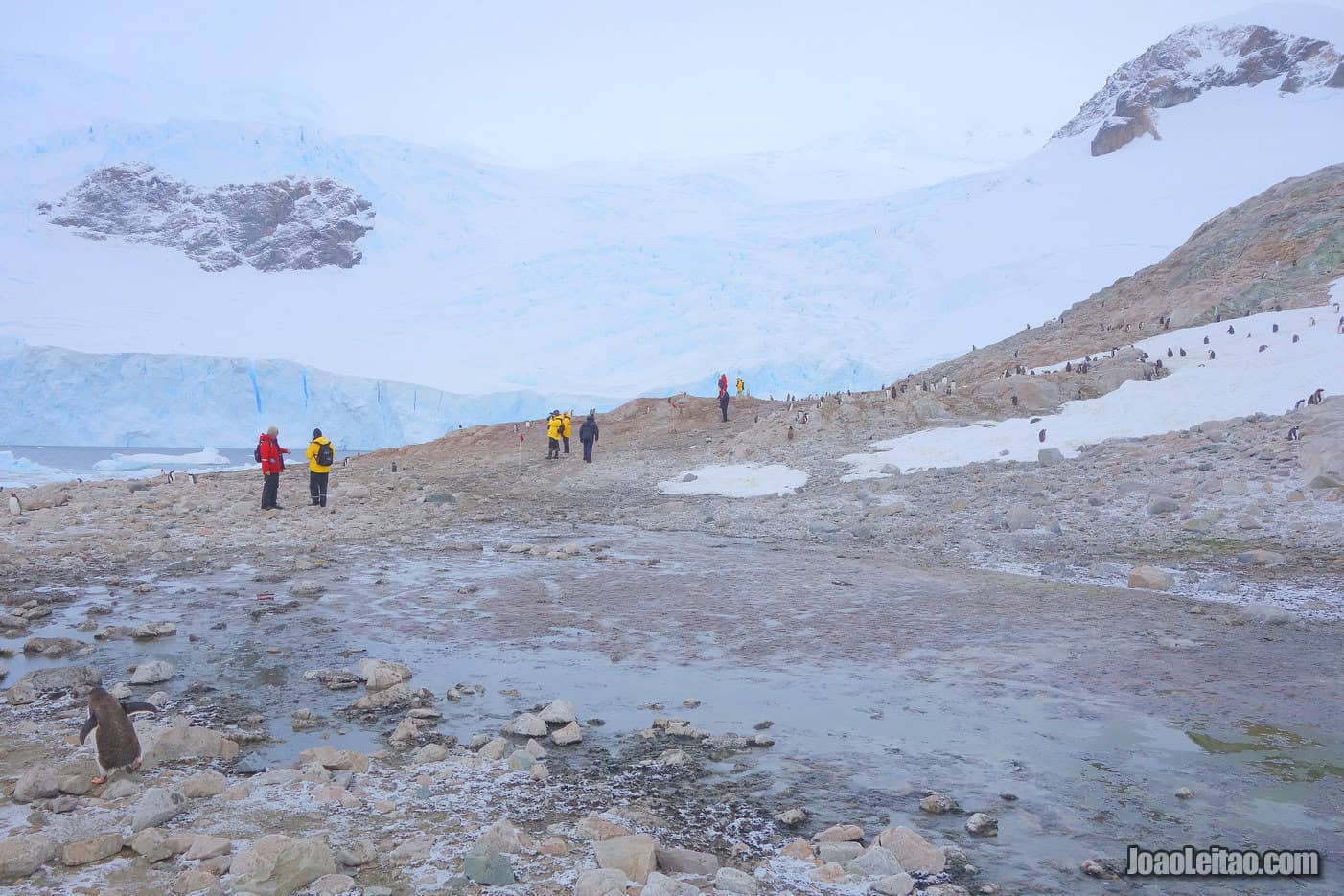
Glaciers, the massive ice formations moving on land mass, are one of the attractions on Antarctica’s landscape. Not only can you see them frequently, but you can walk on them when you get off the ship.
The visual impact of a glacier depends on how bright and pure is the ice in it. Sometimes there’s mud and dirt stuck in the ice that take away some of its natural beauty, but when it’s totally clean the blue reflections are impressive.
Zodiac Trips
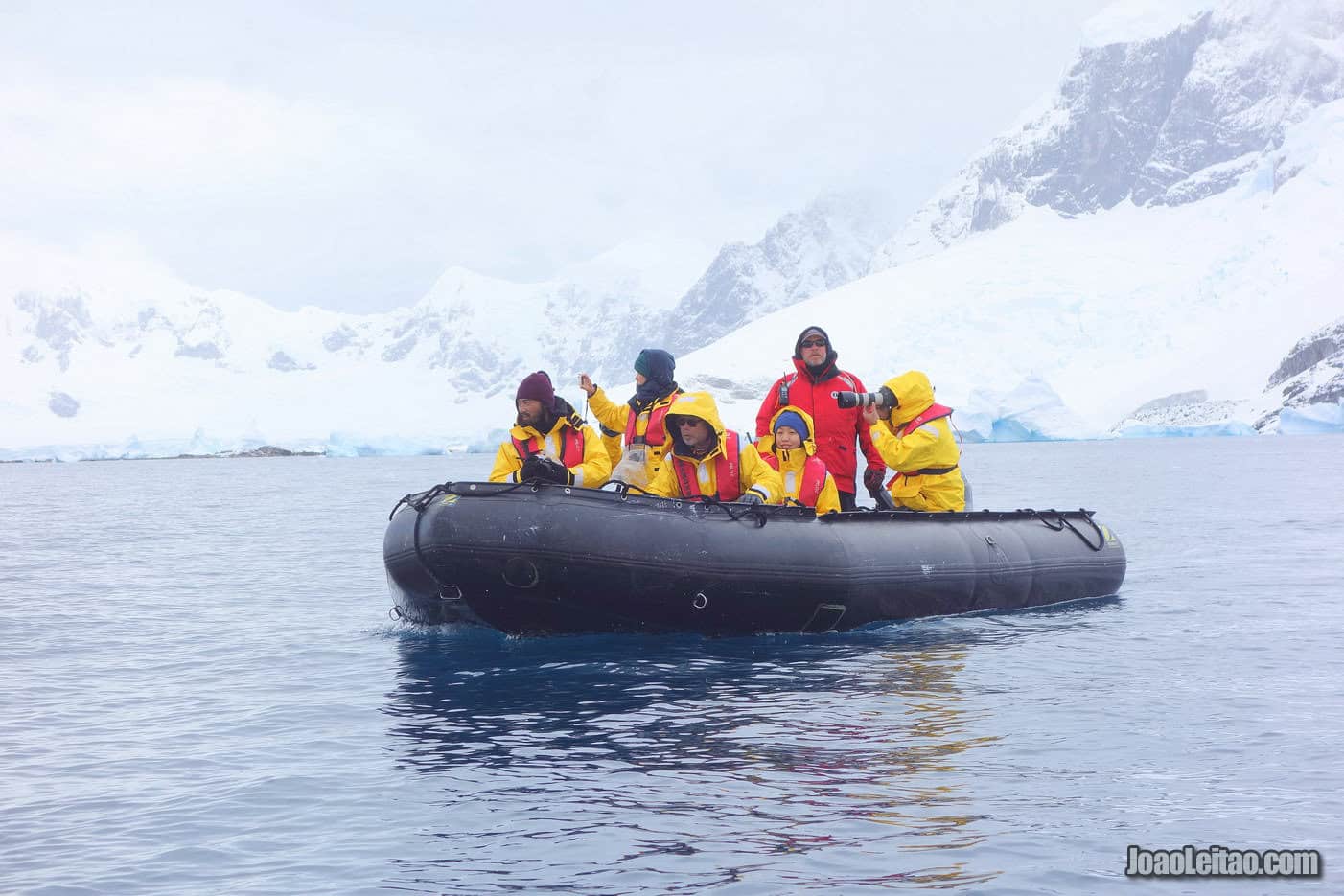
Practically all cruises include some of these zodiac tours. Passengers can get closer to nature, traveling in small groups, and they can observe wildlife, icebergs, and the Antarctic coast. It’s sometimes a bit uncomfortable, people get wet, the wind can be freezing, but the amazing photos you’ll take will make you forget all that.
The Drake Passage
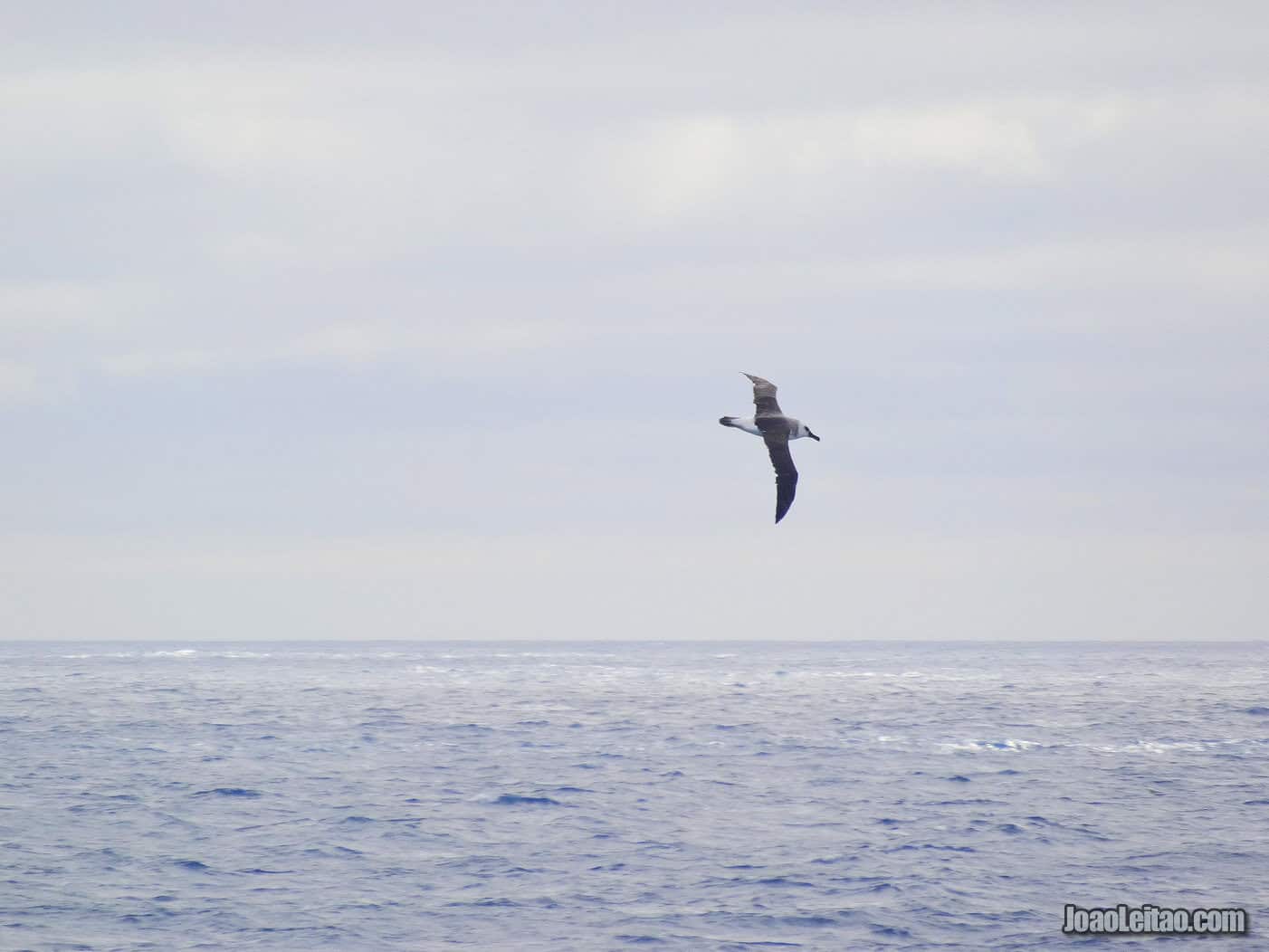
The Drake Passage is the body of water separating the tip of South America from Antarctica. It takes two to three days to cross, and it’s the place on Earth with the roughest sea. That might scare some people off, especially those prone to seasickness. If that’s your case, it’s best to take a flight instead. On the other hand, witnessing the ocean’s fury is something else!
The Silence
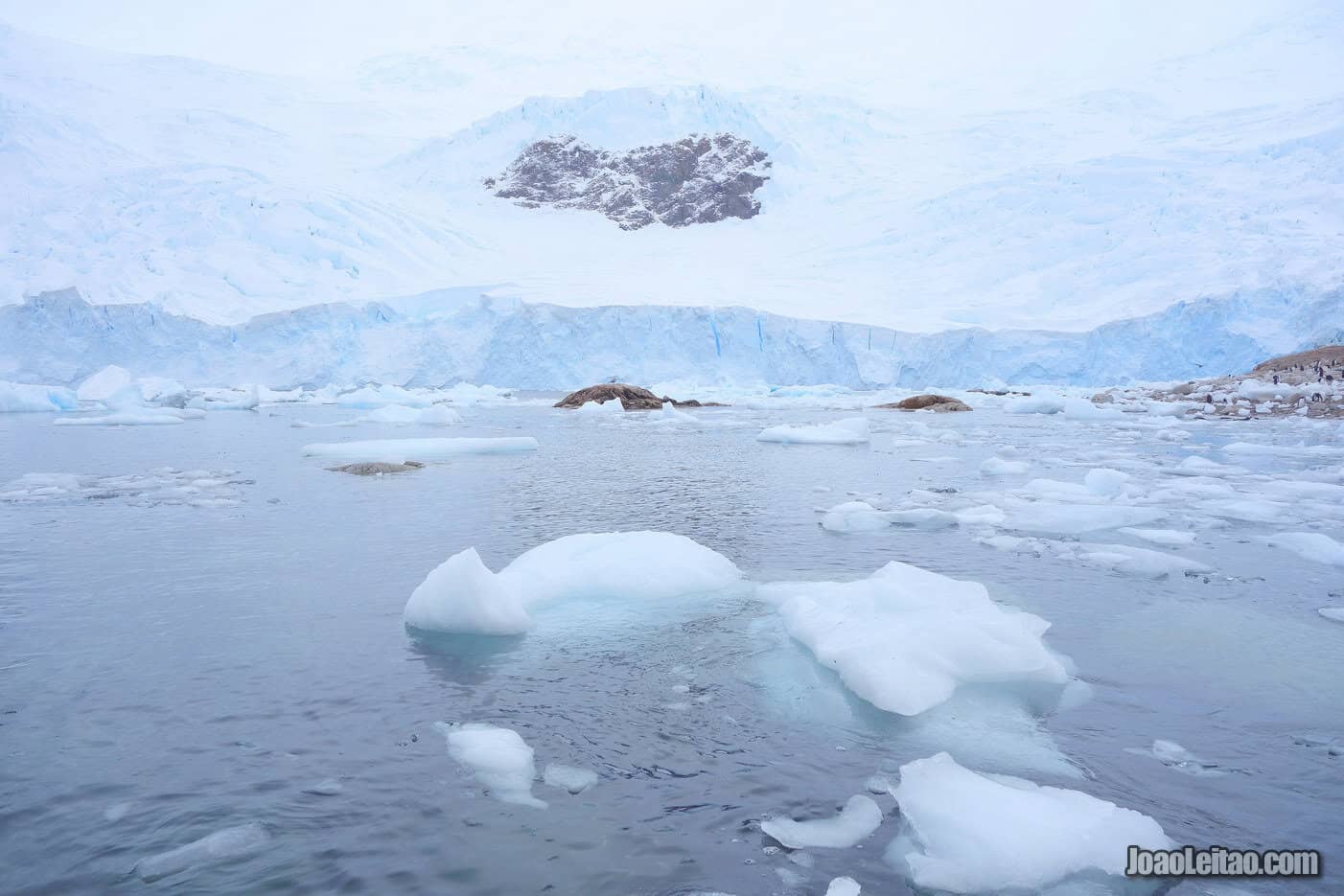
Under certain circumstances – if the wind stops blowing, if there are no animals around, and if you can get far enough from other people – it’s possible to listen to the silence of Antarctica. It’s a deep, deafening silence, similar to what you experience in the desert. A rare luxury in our modern lifestyle, when we tend to forget what it’s like to hear nothing. That is one of the things you can appreciate in Antarctica.
Stargazing
The sky in Antarctica is unbelievably starry. Not only does the complete absence of light pollution enhances the number of visible stars, but the number of days (and nights) of clear skies allow for an unobstructed view of the starry sky. Besides, the night sky on the southern hemisphere is different from the one you see north of the equator, something that’s even more appealing than just being delighted by natural beauty for those who know stars and constellations well.
Scientific Stations
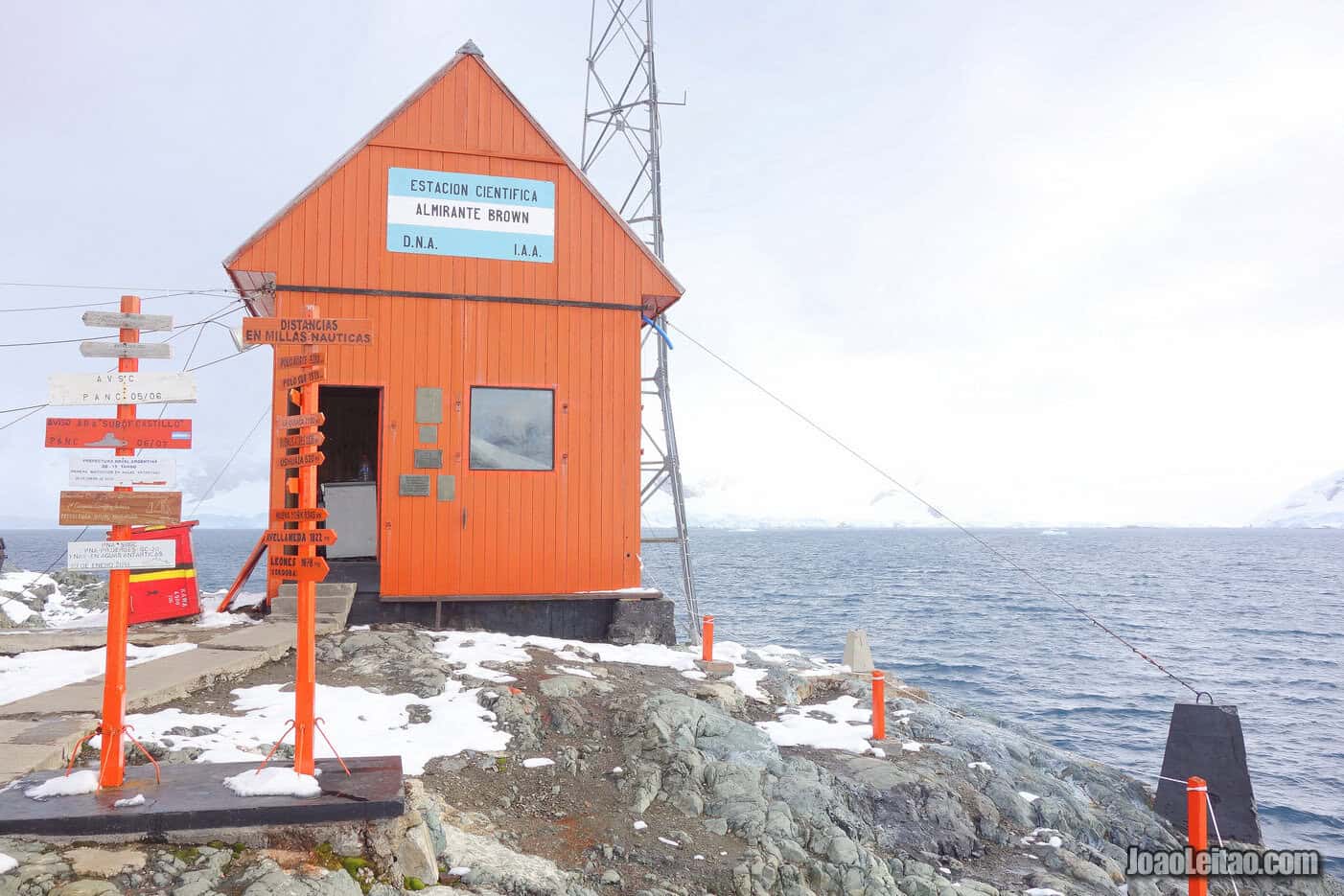
Although formally the scientific stations based in Antarctica aren’t open to the public, there’s always the possibility of an exception. If that’s not possible at all, there are some that have been turned into museums, recreating life as it was in those not-so-homey facilities where the pioneer scientists studying Antarctica lived.
Tip: try choosing a program that includes a visit to the Ukrainian base Vernadsky Research Station.
2. Extreme Experiences in Antarctica
Some of the experiences you can have in Antarctica are more extreme, requiring a level of physical fitness that most people might not have or simply the need for a more privileged financial situation.
Snow
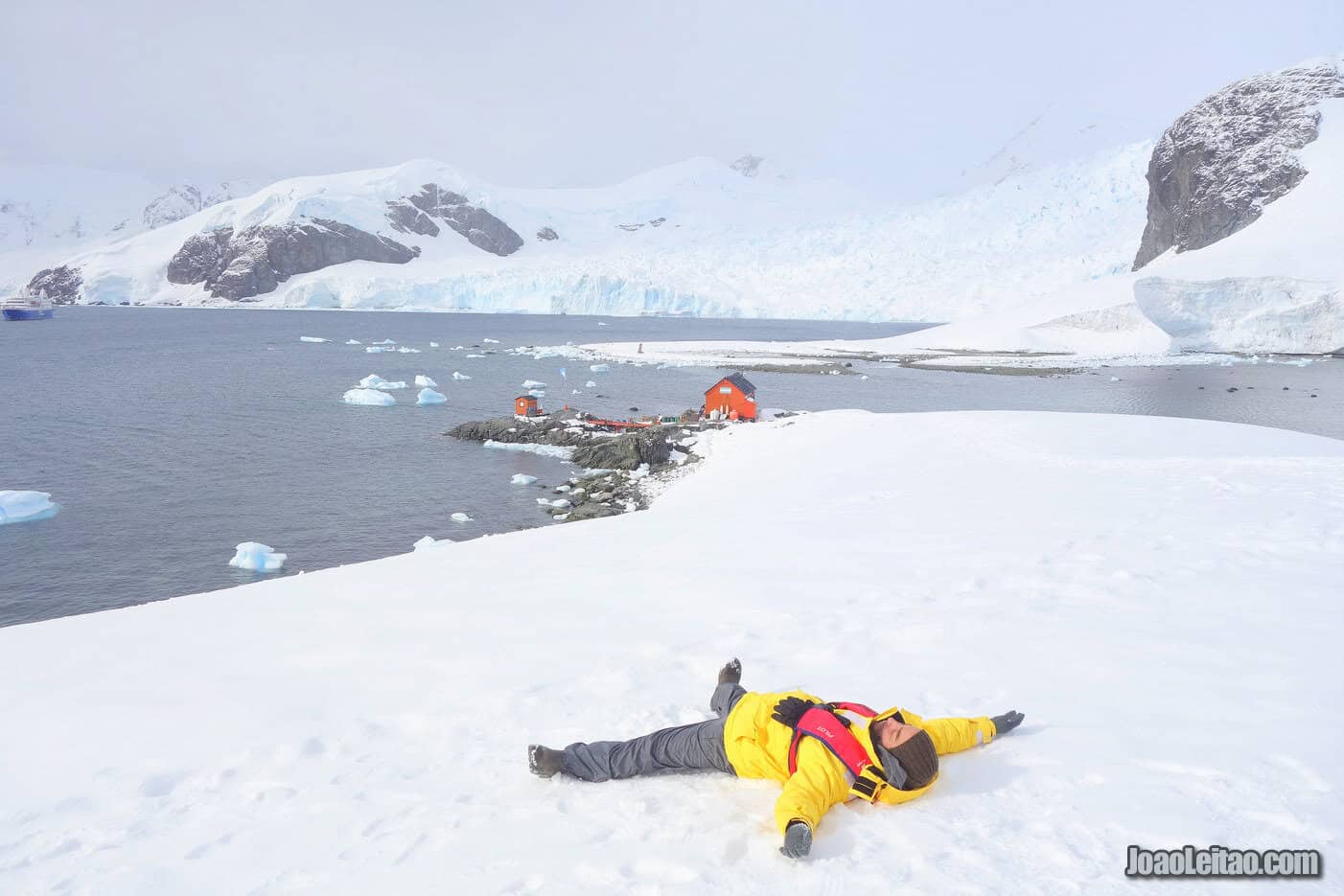
There are ice hills near arrival points where tour organizers challenge travelers to slide downhill. A fun and adrenaline-pumping activity.
Ice Caves
Going inside an ice cave is unique. There are some places in Antarctica where you can do that, especially in the area around Mount Erebus, the southernmost active volcano on Earth.
Aurora Australis
Most people have heard about the fabulous natural phenomenon that happens on the north side of the planet, Aurora Borealis. But what most people don’t know is that the same fascinating dance of lights also occurs in the south, under the name Aurora Australis.
However, seeing the Aurora Australis is much rarer and harder. It’s less frequent, and the viewing points are rare to find. But, if you’re lucky, you’ll be able to see something more fascinating than the “northern lights.” Here, in addition to the same green and blue you see near the Arctic, you’ll see shades of orange, gold, pink, and purple.
The best time of year to witness this phenomenon is between March and September, precisely when there are no expeditions to Antarctica. That says a lot about the difficulty to see an Aurora Australis.
Skiing and Snowboarding
If you enjoy skiing and snowboarding, it’s possible to do it in Antarctica. However, as you can imagine, there are no machines or transportation to help you up the frozen slopes. You’ll have to climb, and it will probably be the hardest climb to ski that you’ve ever experienced.
Please note that these activities are only available if included in your expedition and you’ll most likely need previous experience.
Diving
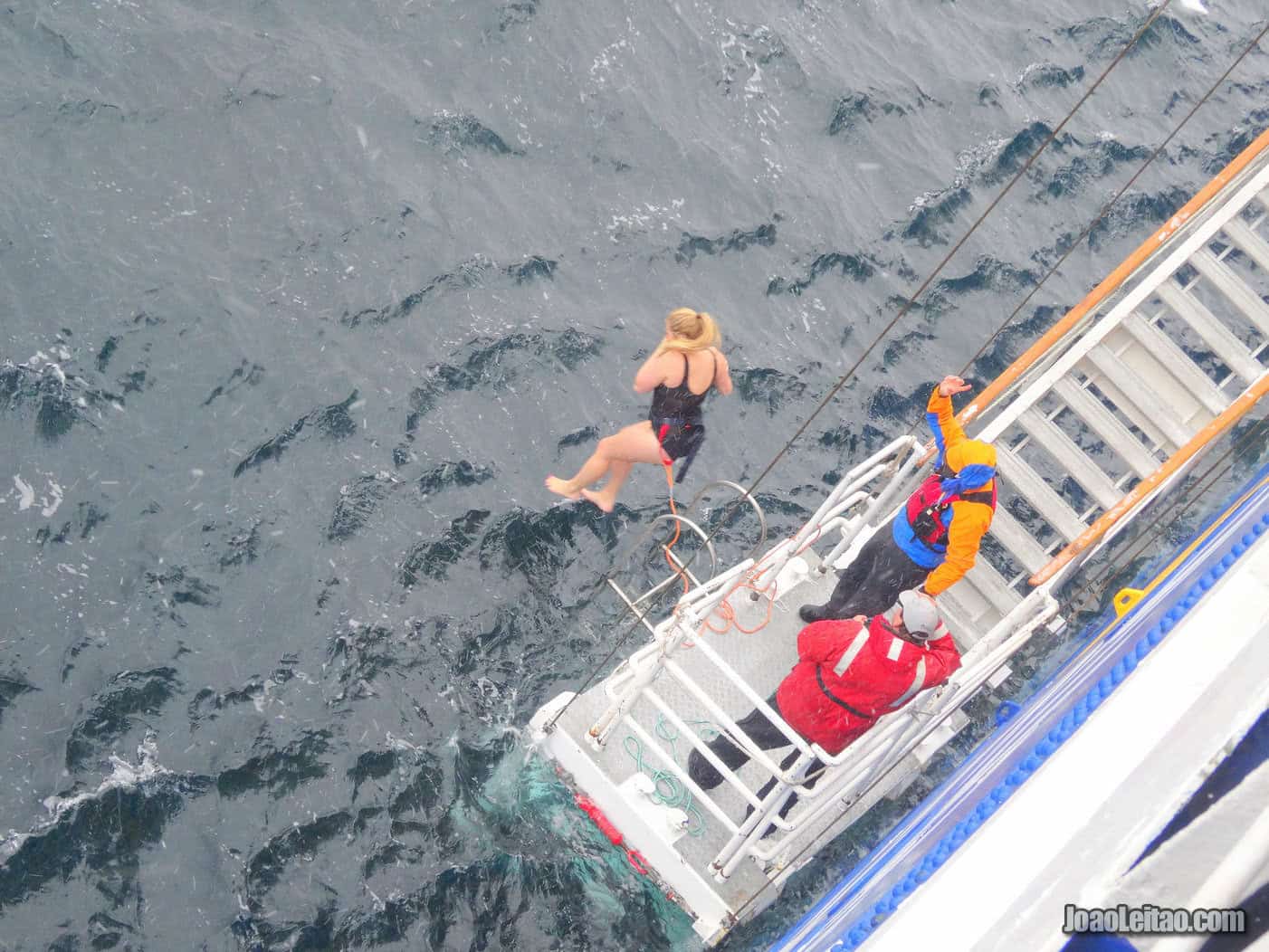
If you’re a diver, you can add Antarctica to your diving list. Expect diverse underwater wildlife, excellent visibility and, above all, the opportunity to explore the underwater side of an iceberg.
However, this is not an activity for beginners. You’ll need a certification in advanced open water diving with a dry suit and at least 20 dives recorded. And, of course, you need to find the right expedition that includes diving.
Canoeing
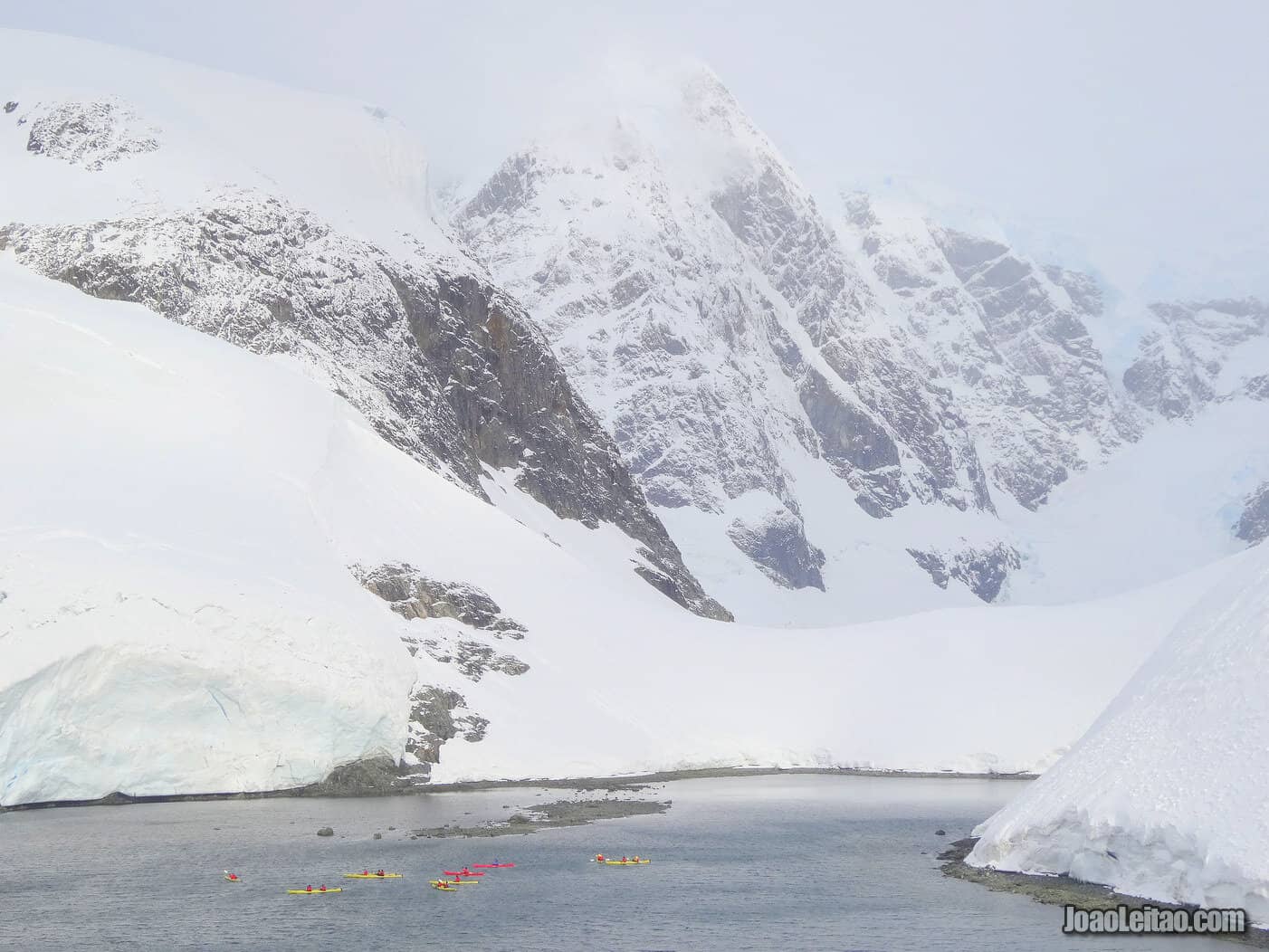
This is one of the favorite activities of people visiting Antarctica, and if you enjoy canoeing, you should look for a cruise that includes this activity in their package. You’ll probably pay extra for it, but you can always look for a good last-minute deal.
There is something magical about getting in a small kayak and venturing out into the dark waters of Antarctica. Feeling the wind on your face or hearing absolute silence. Going around icebergs, contemplating each detail on its surface from a short distance or seeing a colony of penguins from a different perspective are good examples of what you can get out of a kayak tour. If you’re fortunate, you might have a whale swimming so close to you that you can almost touch it!
The number of times you’ll be able to go solo on the waters of Antarctica depends on the cruise you choose. If this is important to you, clarify it with the tour organizers before booking the ticket.
Helicopter Ride
A helicopter ride is something rare for most people. A helicopter ride in Antarctica is even more special, giving you the chance to see the landscape from above and to reach places you couldn’t get to by other conventional means.
Camping
This is a different way to experience the frozen continent, to understand how the first explorers of Antarctica felt like, to sleep on the solid ground for one night. Don’t fear the weather conditions or for your safety. You’ll be in good hands, always with an experienced guide, and you’ll have high-quality gear for a reasonably comfortable night. For all those reasons, you should understand if the camping trip is postponed or canceled by the tour organizers. Weather shifts quickly and when it comes to safety, you won’t want to risk it.
Swimming
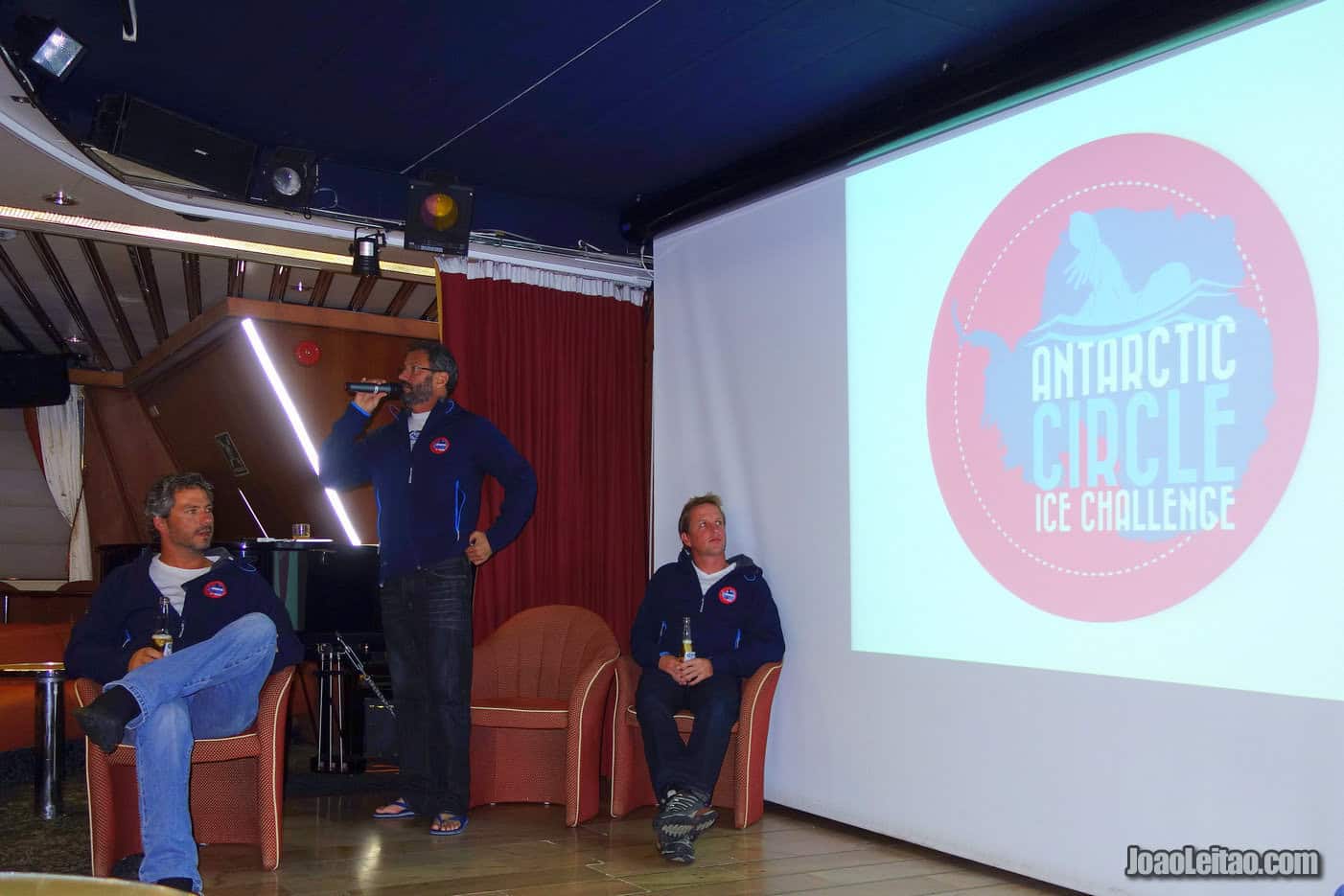
This is one of the so-called “initiation activities.” A challenge to the boldest, willing to jump into the super cold waters of Antarctica for a swim. You’ll typically jump into the water from the edge of the ship, although some beaches are good for that too. On the other hand, you can experience something different: dip into one of the geothermal hot springs, like in Pendulum Cove.
For the toughest ones, there is an association for ice swimmers, in which they try to beat records of swimming in extreme situations. During my trip there was a group of South Africans trying to beat the 1.5 mile record. You can see the records of swimming in Antarctica.
Records of swimming in Antarctica
Climbing Mount Vison
You can climb the highest mountain in Antarctica, 4,897 meters high, but it’s a really expensive odyssey. It takes months of preparation and reaching the peak will take at least two weeks.
Running a Marathon
For marathon runners who want to complete a run in each continent, there is a chance to do it in Antarctica, too. You’ll have to run wearing appropriate gear and be ready to endure freezing winds, so it’s advised to take some time to get used to the environment before the run. But it will definitely be something special. How many people can say they’ve run a marathon in Antarctica?
The South Pole
As I’ll explain in a bit, it’s possible to visit the South Pole, to where you have to travel by plane. It might sound simple, but it’s costly, especially if you decide to stay overnight instead of just a couple of hours.
3. Observing Wildlife in Antarctica
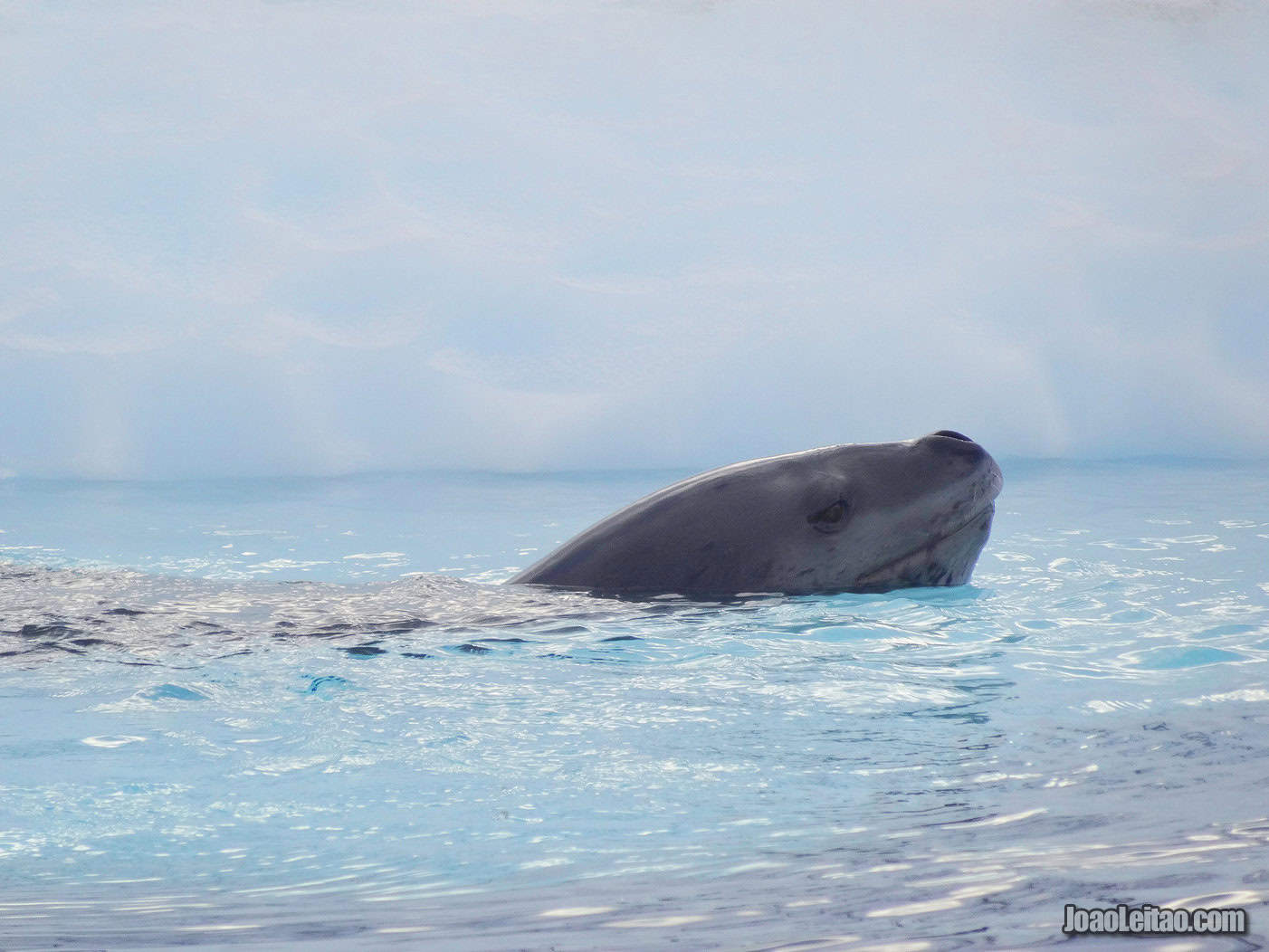
Wildlife and nature enthusiasts will have plenty to do and see in their trip to Antarctica. Although you can only visit when it’s summer in the south hemisphere, from November to March, that’s precisely the time of year when life happens in the frozen continent.
There are four large groups of animals that attract tourists: whales, seals, penguins, and birds. Within those groups, some of the species are usual and you’ll see them often but others are so rare that spotting them will be a memorable experience.
Whales
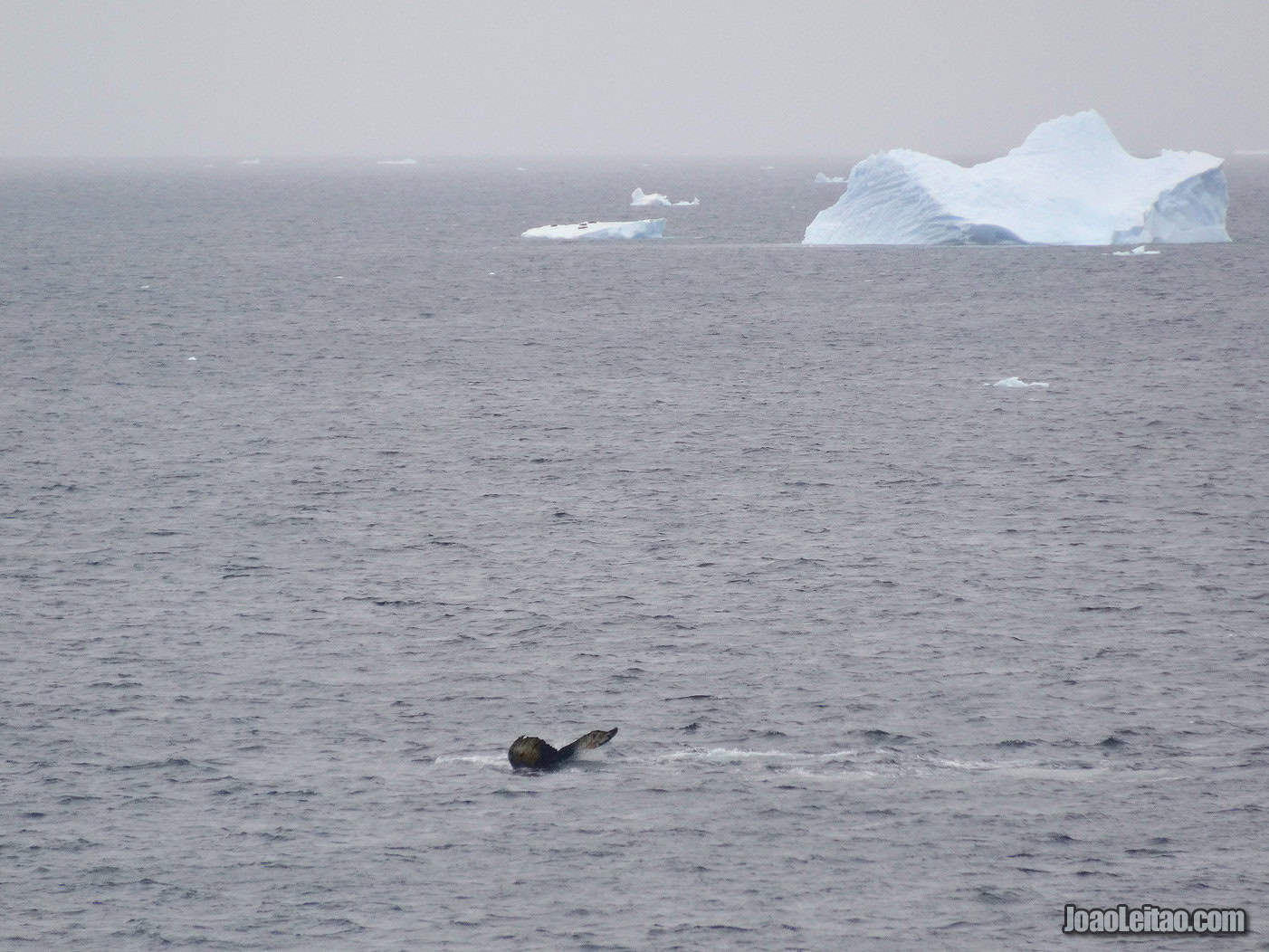
There is something magical about these huge animals and in Antarctica there are eight species, including the blue whale (Balaenoptera musculus). It’s a massive cetacean, the biggest mammal on Earth, that can weigh up to 130 tons. After a period of high risk when extinction seemed looming, the population of blue whales is increasing. Even still, the chances to spot one on a trip to Antarctica are slim.
But from December to April you’ll have good chances of spotting other whales, especially in February and March. You might get great shots of the humpback whale (Megaptera novaeangliae), an animal that defies the laws of gravity with incredibly high jumps that seems like they’re floating above water for a second. They can grow to be 19 meters long and weigh up to 40 tons. There are some areas with higher chances of spotting this species, like in Wilhelmina Bay (which grants it the nickname “Whale-mina Bay”).
Fin whales (Balaenoptera physalus) are the second largest animal in the world, after the blue whale, growing to be 27 meters long and weighing up to 50 tons. Their body is long and slim, allowing them to be the fastest swimmer in the ocean.
Orcas (Orcinus orca), also known as “killer whales,” are ferocious predators working as a pack to hunt their preys, which could be smaller whales sometimes.
Other whales you can spot in Antarctica include right whales (Balaena glacialis), sei whales (Balaenoptera borealis), and Antarctic minke whales (Balaenoptera bonaerensis).
Seals
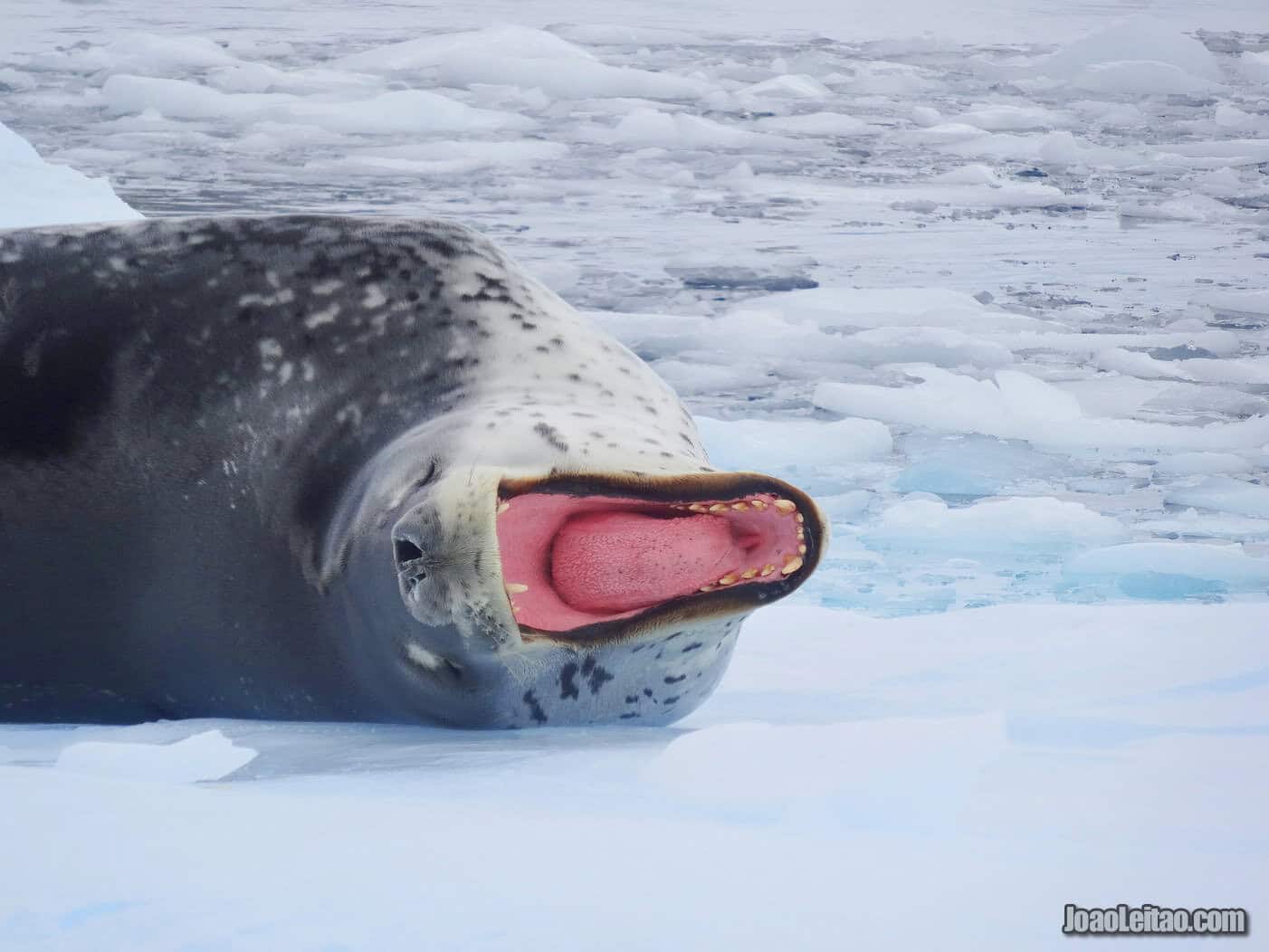
Travelers in Antarctica love seeing seals, especially when they have pups, always curious and clumsy. There are different species of seals and November is the best month to see them. Those include the southern elephant seal (Mirounga leonina), the largest carnivore in Antarctica. The males can grow up to six meters long and weigh up to four tons. The Antarctic fur seal (Arctocephalus gazella) is also a local resident and easier to spot, due to the large numbers of these animals in the area. That said, spotting the rare “blonde” variant is an accomplishment worth bragging about.
Other seal species that live in Antarctica include the crabeater seal (Lobodon carcinophagus), the Weddell seal (Leptonychotes weddellii), and the leopard seal (Hydrurga leptonyx).
Penguins
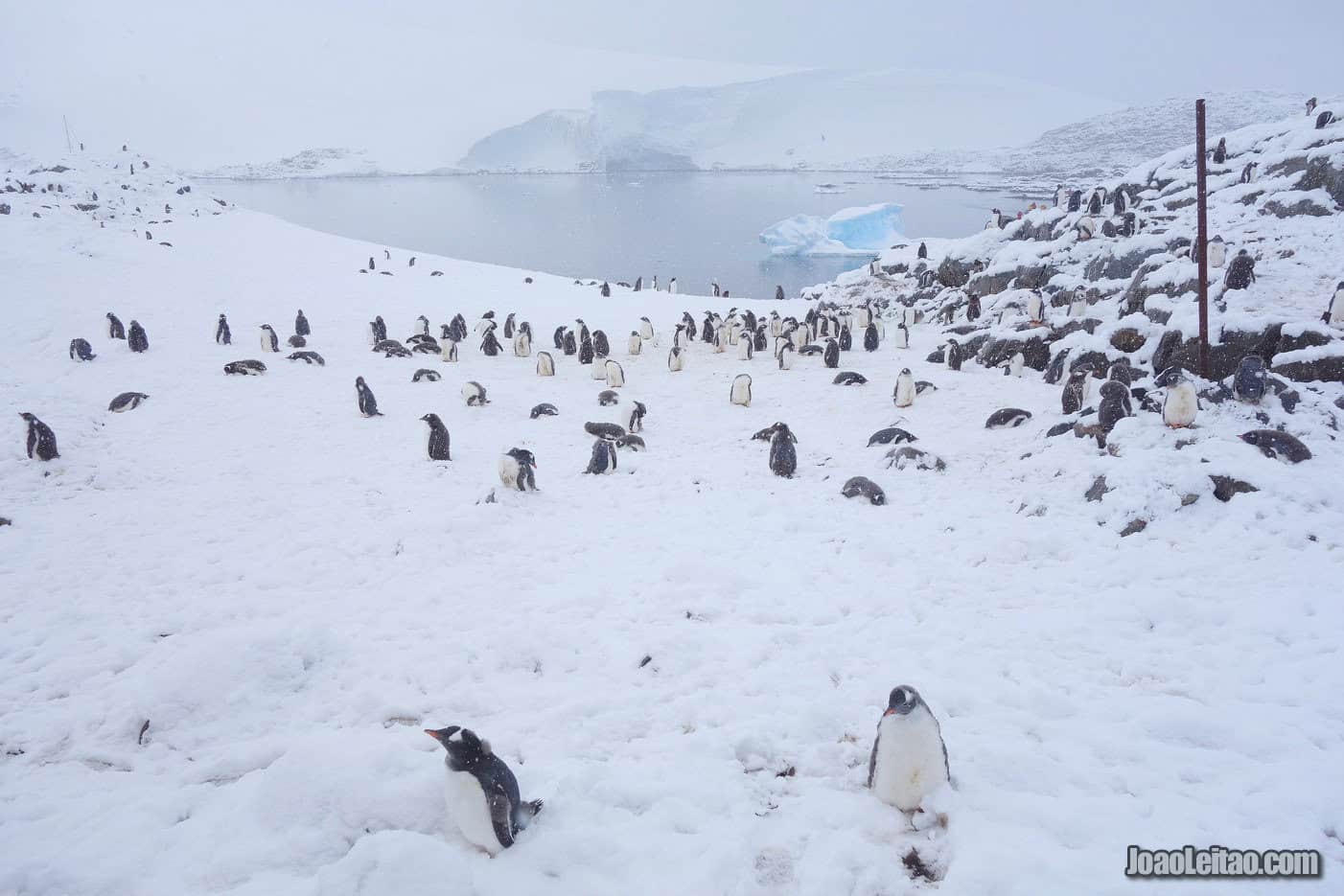
Penguins are the main stars in Antarctica. These always photogenic friendly animals live in large colonies, mainly active in February when parents are busy feeding their chicks.
There are about 17 different species of penguins in the area, but only two of them, the Adélie penguin (Pygoscelis adeliae) and the emperor penguin (Aptenodytes forsteri), live in the heart of Antarctica. All other species live on the north shore of the Antarctica peninsula, where living conditions are less hostile.
The Adélie penguins live in colonies by the thousands, sometimes away from the ocean, although their population has decreased in the past decades. They mostly feed on krill and are perfect swimmers with the ability to dive up to 175 meters. They lay their eggs, usually two, in November, that hatch at the end of December. By mid-February, their chicks are fairly independent, going out for their first swims in the ocean. The total population is estimated at 2.5 million penguins.
The emperor penguin is the largest penguin in the world and Antarctica’s most iconic animal. The golden color around their ears and in their chest breaks the penguins’ typical monotonous white and black color. They live and reproduce further south compared to other species, in brutal weather with temperatures as low as -50 degrees Celsius and winds blowing at 200 km/h. The female lays one egg in May and leaves to look for food while the male stays behind looking after the future penguin. It warms the egg with its feet, keeping it 70 degrees warmer than the outdoor temperature. The female returns in August and takes over caring for the egg, that hatches shortly after. By December and January, the young emperor penguins are already able to swim, a great sight for tourists who are lucky to spot them.
Other relevant penguin species in Antarctica include the chinstrap penguins (Pygoscelis antarcticus), the gentoo penguins (Pygoscelis papua), the king penguin (Aptenodytes patagonicus), the macaroni penguin (Eudyptes chrysolophus), and the southern rockhopper penguin (Eudyptes chrysocome).
Birds
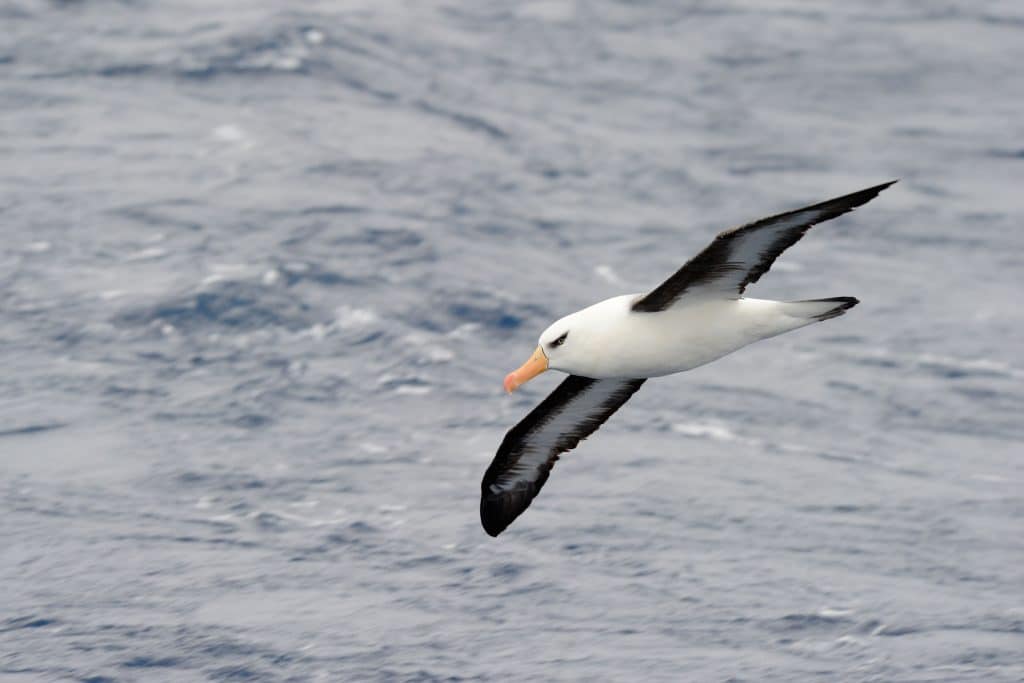
Birth watching in Antarctica is one of the nicest things to do while in the continent. There are 46 identified bird species in Antarctica, including penguins to which I dedicate a special section considering their significance. Most of them are migrating birds, and you can find them in different parts of the world.
Albatrosses are one of the most impressive birds, and there are three different species in Antarctica. Their wingspan of up to 3.5 meters with both wings open enables them to fly up to 1,000 km in one day. The larger colonies live in the Falkland Islands, with up to two million birds.
The brown skua (Catharacta skua or Stercorarius antarcticus) is one of the most common birds in this part of the world. It uses its sharp beak as a defense weapon against potential attackers. They’re the penguins’ worst enemies since they eat their eggs and even defenseless chicks. Some of these birds migrate from the Antarctic to the Arctic, flying 14,000 km. They nest in pairs inside holes they carve in moss, and they usually lay two eggs per couple.
The Petrels are seabirds that travel to Antarctica to breed, and you’ll be able to see different species there. The southern giant petrel or Antarctic giant petrel (Macronectes giganteus) has a wingspan of over two meters, and its body can be up to 90 cm long. They’re typically brown, with a lighter-colored head, but some are white with black spots. They are predominantly scavengers, but at times, if the opportunity presents itself, they might kill a penguin to eat. The snow petrel (Pagodroma nivea) is one of the other common petrels in Antarctica. It’s all white with a small black beak. They live on the cliffs, feeding on fish, and they only breed in Antarctica. Some live here permanently, while others migrate elsewhere from September.
The Cape petrel (Daption capense), with a black head and black spots on its back, typically comes closer to ships in large flocks. They nest among rocks, in unreachable places, and feed mostly on fish.
The snowy sheathbill (Chionis alba) lives near the penguin colonies and feed on their protein-rich feces. It’s completely white, with an oddly flat and pointy beak.
The imperial shag (Phalacrocorax atriceps) has a long neck and a thin, curvy beak. It’s almost entirely black and has blue eyes. They nest on small mounds they build from mud, feces, and feathers.
The Arctic tern (Sterna paradisaea) nests in the Arctic and migrates to Antarctica. It’s white, and the top of its head is black, about 40 cm long and has an elongated, sharp beak to catch fish while nosediving. You sometimes spot them in Portugal, during their migrating trips.



